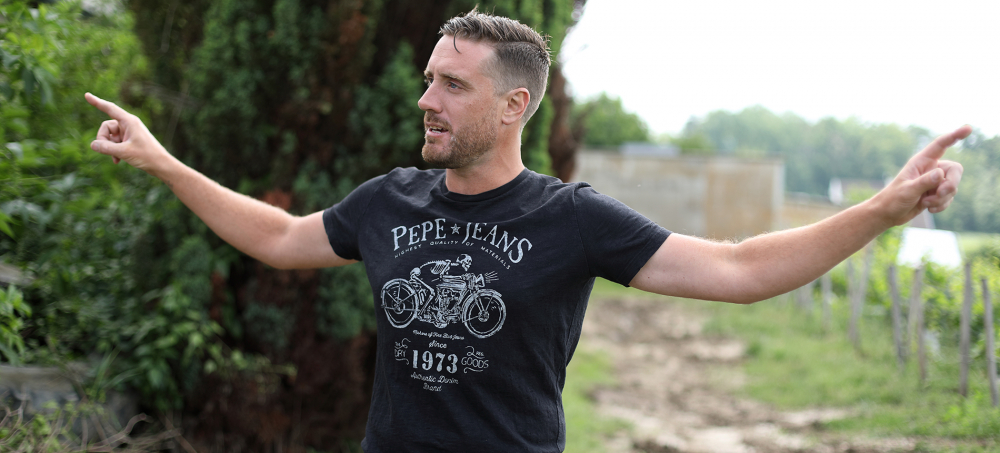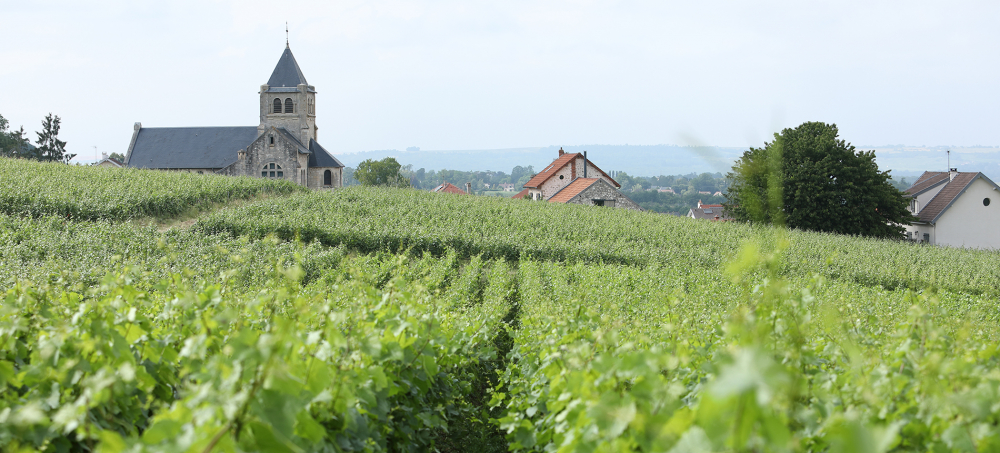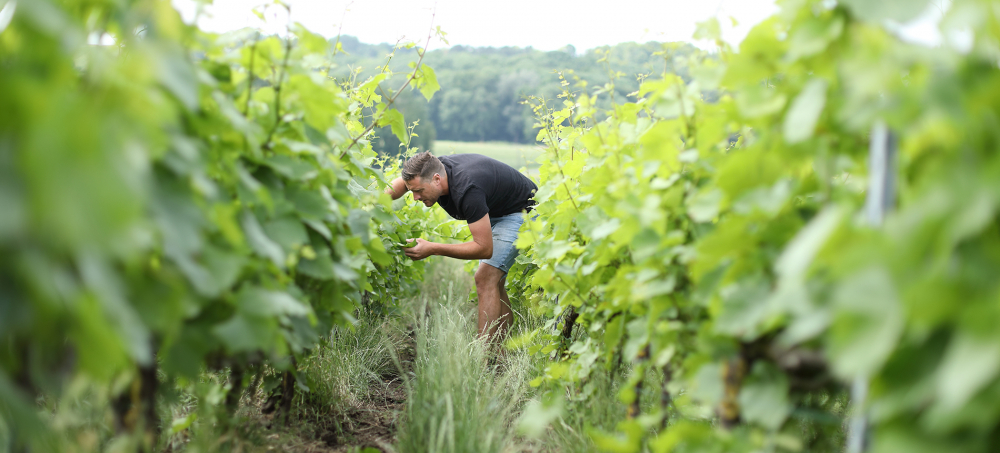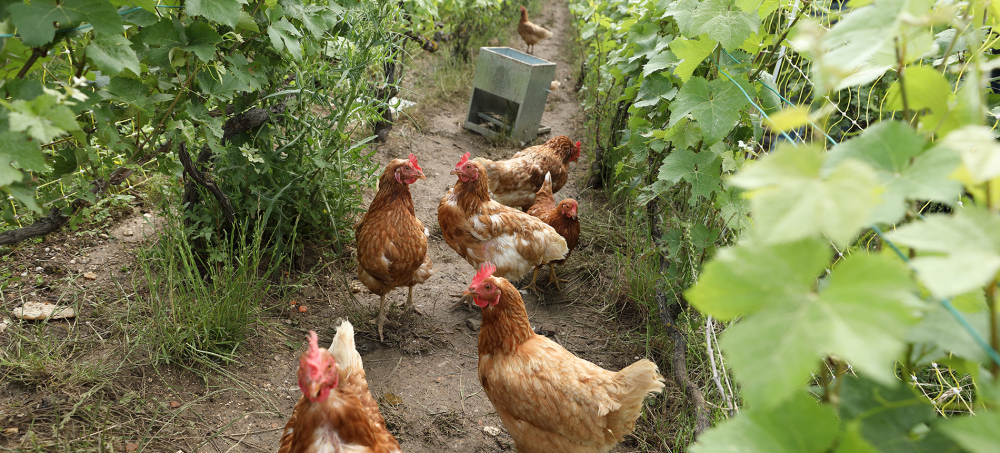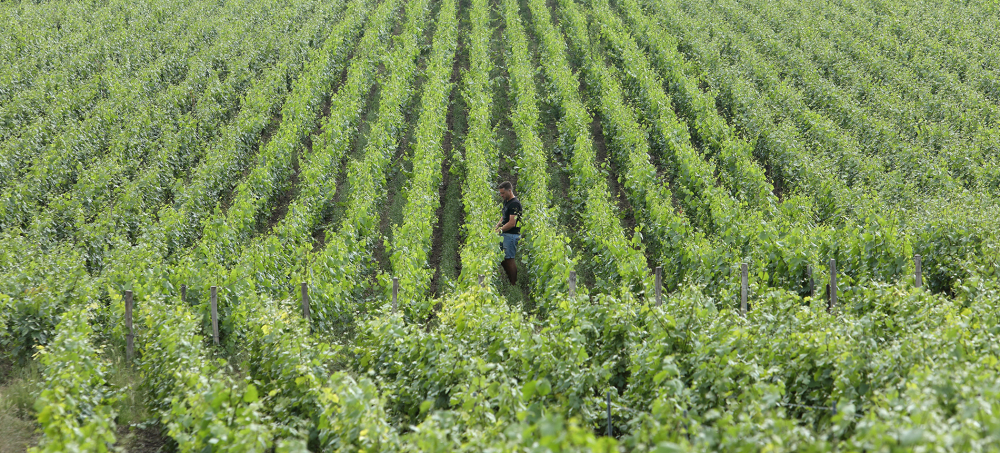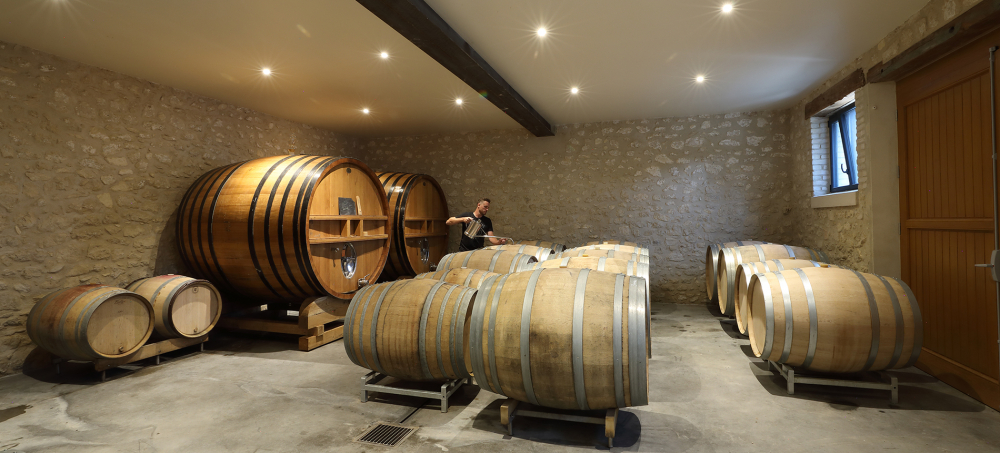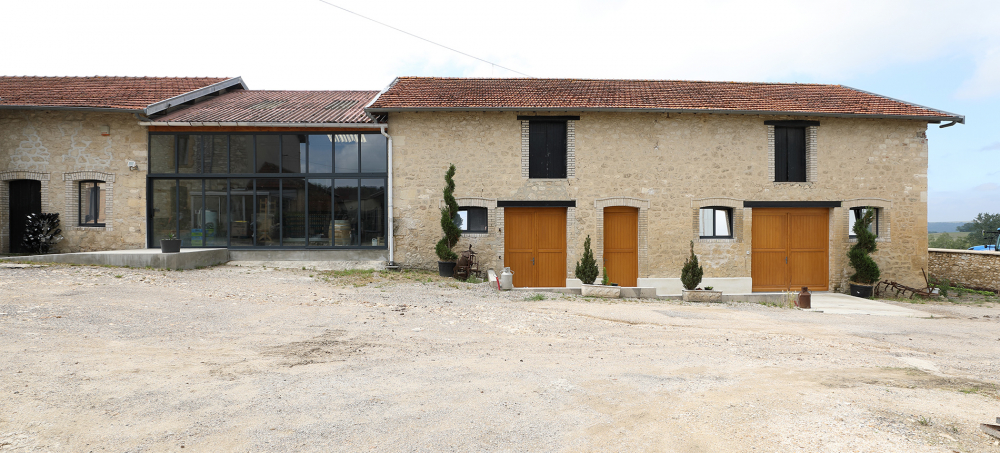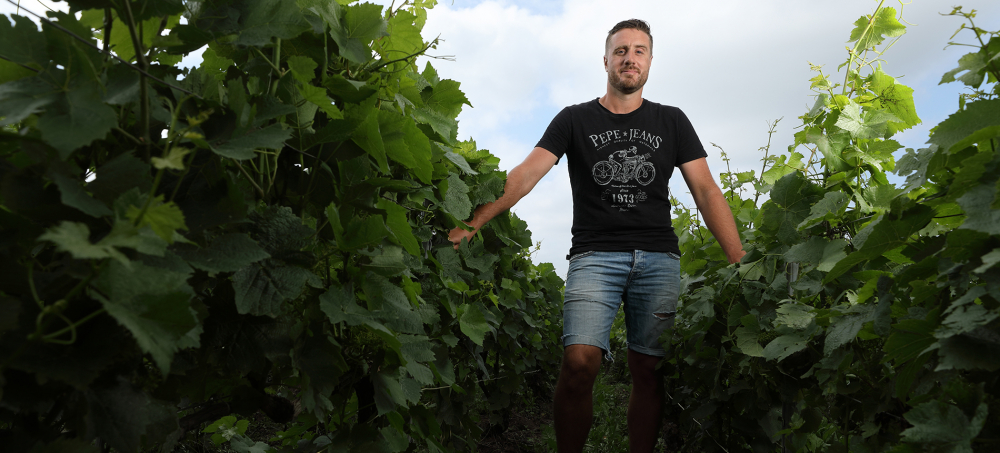It was a tip off from Jérôme Prévost that ultimately led us to Alexandre Lamblot, a young, energetic winemaker in the northern part of the Montagne de Reims who is part of a new generation of progressive vignerons making waves in this dynamic wine region. Lamblot’s family has been growing grapes and making wine in this area since the 1600’s. In fact, the Lamblot family still produces Champagne under its own label, but starting in the mid 2010s, Alexander Lamblot started a small, ambitious project of his own, releasing his first wines in 2019 under the label Champagne A. Lamblot.
Lamblot farms 3.5 Ha of vines scattered across Vrigny, Chenay, Janvry and Gueux which are a combination of vines he inherited from his family and some that he rents and farms himself. The vineyards are fairly densely planted averaging around 9,800 plants per hectare, all with massale selection plantings. The estate is made up of approximately 60% Meunier, 25% Pinot Noir and 15% Chardonnay. While he is officially certified organic as of the 2021 vintage, Alexandre feels that the prescribed regimen for certification is a really only a “good start”, and his work in the vineyards goes well beyond in terms of his practices and his desire to deliver efficacy with the least amount of impact on the environment.
For starters, he does not use any big tractors in his vineyards for fear of impacting the soil too much. Instead, he uses smaller, lighter mini tractors that can fit down the rows. To increase biodiversity, he allows natural plants to grow and thrive between the vines, and controls the balance of the cover crop either by incorporating a roller, or by bringing in a mobile chicken coop where the chickens both feed on the plants and also fertilize the soil. He also uses Vitiforestry, with small trees interplanted in the vines, around 100 different species of trees planted in each hectare. To control the usual maladies in the vineyards, he uses the prescribed organic copper and sulfur regimen, but tries to reduce the copper by also substituting essential oils that have homeopathic protective abilities. In addition, there are biodynamic preps that are employed in his parcels.
In winter, Lamblot uses a technique where he braids the vines in order to increase energy exchange and as a natural protection against frost. Spring means a good amount of debudding to control yields and ultimately build intensity and texture to his wines. Harvest, of course, is all done by hand, in small, flat bins where the bunches are all on one layer in order to keep the grapes entirely intact. While he incorporates a traditional wooden press, he presses very slowly and carefully separates each press fraction which he then vinifies on its own. The wines are fermented with indigenous yeasts in a mix of 228 to 600-liter barrels, mostly used. He ultimately plans to make his own barrels from wooden staves of local oak that he is presently seasoning and drying for several years. He is also experimenting with fermenting and aging in jarres, or clay amphoras, particularly on his single parcel wines.
For the second fermentation, he bottles the wines at around 11 months without fining, filtration or cold stabilization. SO2 levels are kept relatively low, around 15-20 mg total at bottling. After a couple of years using standard selected yeasts, he now works with a local laboratory to isolate and replicate the naturally occurring yeasts that occur in each vineyard for the prise de mousse. Additionally, Alexandre opts to bottle with 22 grams of sugar instead of the more typical 24 grams, resulting in a soft, fine mousse. For the remuage, the wines are hand-riddled on traditional wooden pupitres using a process called poignettages where the bottles are also shaken by hand to remix the yeast during the aging sur-lattes. Disgorgements are done by hand, à la volée, and almost always without dosage (Brut Nature). Lastly, the philosophy of sustainability is carried over in Lamblot’s selection of packaging materials. Bottles, labels and boxes are all mostly recycled, and come from local suppliers, corks too sourced locally as well.
The Lamblot range starts with his cuvée called Intuition named for his intuition and guided intentionality that governs his philosophy of grape growing and winemaking. It is a Meunier-dominant blend of all three grape varieties on the estate. However, in years when the Meunier does not meet his standards (such as 2017), he will make a cuvée called Mouvance, which is a term referring to the dependence of one phenomenon on another. Lamblot also makes a couple of parcellaire wines, each from 100% Pinot Meunier. At present, there are Les Cotes Chéries (1984 plantings in Gueux) and La Frénésie (Vrigny). That list could very well expand as Lamblot learns more about the sub-parcels within his current holdings, or is able to find other vineyards that merit bottling on their own. Finally, in the future, there will be a Solera wine to come which is quietly aging in foudres.
Stylistically, the Lamblot wines remind us of a hypothetical mix of the brooding power and intensity of Cedric Bouchard with the voodoo Meunier complexity and magic of Jérome Prévost. Like both of these tried-and-true artisans, Lamblot’s first passion is to make the best possible base wine first, and then to add the bubbles which gives a second dimension. Though with less than 10K bottles produced, allocations are hard to come by at this dynamic and evolving small estate. For sure, more and more exciting things are to come in the years ahead!
